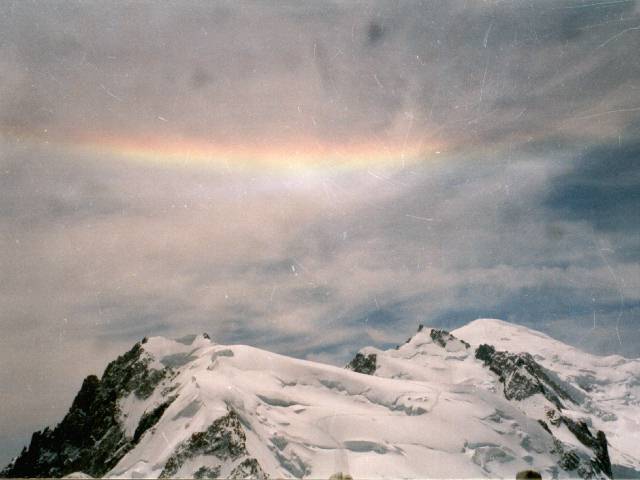- Crystal orientation:
- Basis horizontal
- Path of light:
- 3-2
- Occurrence:
- In Germany rarely
EE 23

Description:
A circumhorizontal arc is as colourful and bright as a circumzenithal arc. But to let it become visible the sun has to be very high in the sky. Only at sun elevations of 57.8° (90 -32.2°) or more it shows up as a colourful line along the horizon on the same side of the sky where the sun is. With the sun the circumhorizontal arc also gets higher and at a sun elevation of 67.9° it reaches its maximum intensity. In Germany, in summer the sun reaches an elevation of about 61°. So a circumhorizontal arc can form only on a few days of the year during the hours around noon. Here it has been observed just a few times. If you travel to countries which are more in the south in your summer holidays, you will get a better chance to see this impressive halo. In countries north or south of a latitude of 55° the circumhorizontal arc cannot be seen as there the sun is always lower than 57.8°. So this is one of the few halos that cannot form everywhere on earth. But if you climb a high mountain, it is also possible to see a circumhorizontal arc in northern countries.
Formation:
Like a circumzenithal arc, a circumhorizontal arc is caused by plate-shaped ice crystals floating in the air. In this case, however, the light enters a vertically orientated side face of the crystal and leaves the lower horizontally orientated base face.


